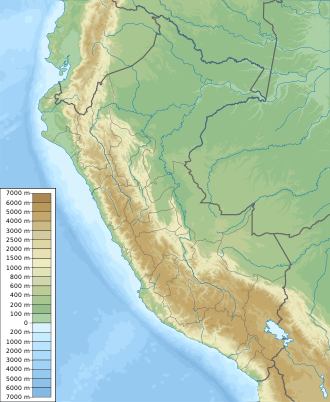| Bahuaja-Sonene National Park | |
|---|---|
| Parque Nacional Bahuaja-Sonene | |
 Signboard at the entrance of the buffer zone. Bahuaja Sonene National Park. | |
 | |
| Location | Peru Madre de Dios, Puno |
| Nearest city | Puerto Maldonado |
| Coordinates | 13°16′S69°27′W / 13.267°S 69.450°W |
| Area | 1,091,416 hectares (4,213.98 sq mi) |
| Established | 17 July 1996 |
| Governing body | SERNANP |
Bahuaja-Sonene National Park (Spanish : Parque Nacional Bahuaja-Sonene) is a protected area located in the regions of Puno and Madre de Dios, in Peru. [1]
